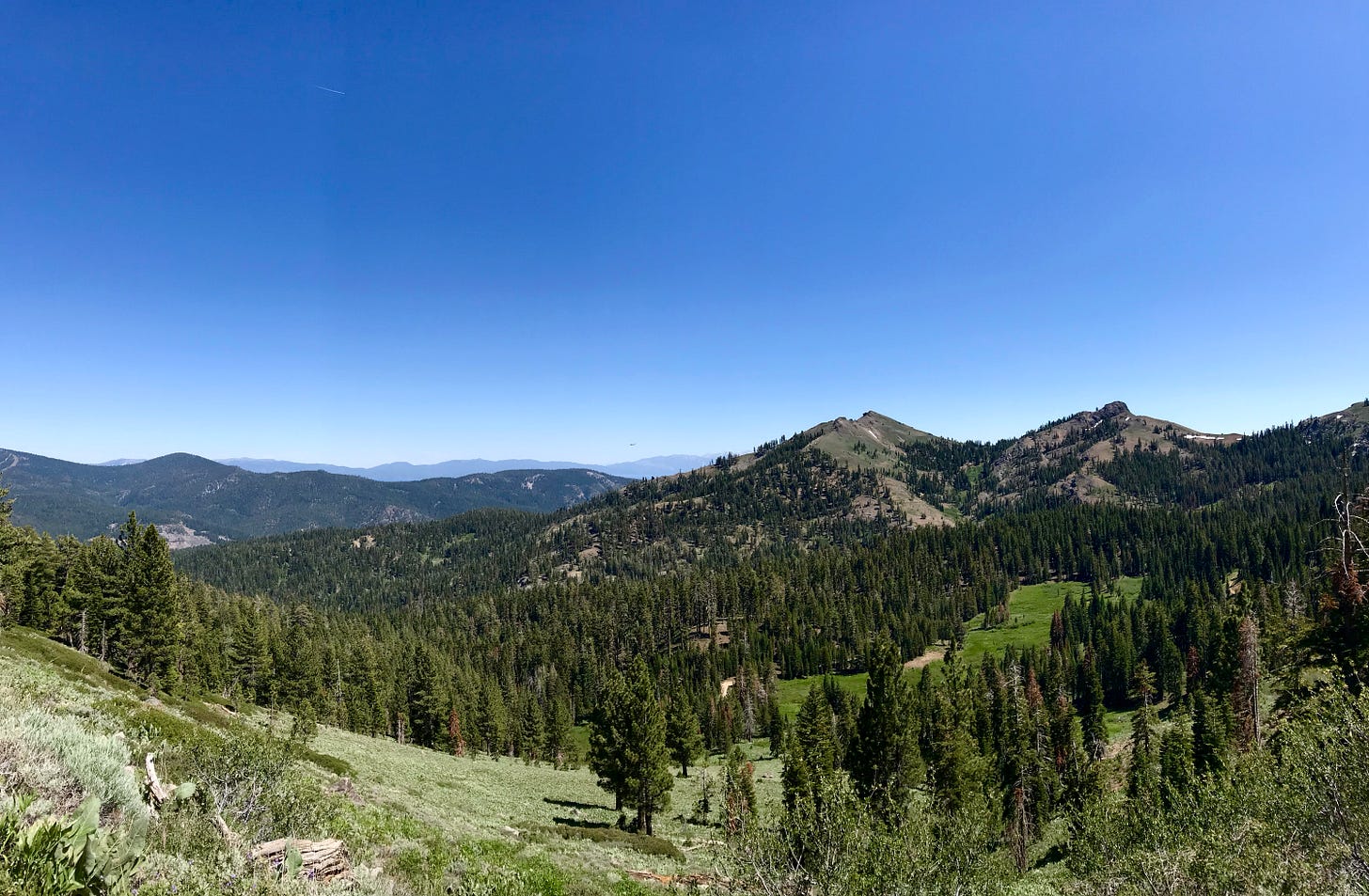The Breeze is a free weekly email about climate tech investing.

I love helping founders with fundraising. Is that weird? I like the creative process of crafting a startup’s story into a compelling narrative. I like inviting friendly VCs to consider investing. I like seeing a CEO’s confidence grow when her pitch starts to click. I’m the guy who shows up early to help a friend get a party started.
A lot of things have to go right for fundraising to work. When it does, it’s a magic moment in a startup’s journey. It’s a privilege to be a part of. And though it’s a slog, it’s fun to do together.
Here are 5 fundraising tips for climate tech startups from my time working with Congruent Ventures and my Jetstream Syndicate.
5 Fundraising Tips for Climate Tech Startups
Target climate-focused firms
Emphasize the economics
Design a compelling narrative
Build and leverage relationships
Consider all funding options
Bonus!
1. Target climate-focused firms
Climate-focused firms want to see everything that touches climate. They’re often interested in impact — broadly, “doing good” for climate — if it’s not an outright mandate. This is a great “in”.
The group of climate-focused firms is still small but growing. They’re a friendly bunch who mostly all know each other and want to see climate tech startups succeed. If you’re not a fit for one, it’s worth asking for intros to the others.
Here are some lists of climate VCs: The Breeze Issue #2, CTVC Climate Tech Investors, Amasia: US Climate VCs, Climatescape Venture Capital.
The next best candidates are climate-friendly firms. These are VCs that have either publicly or privately indicated an interest in climate-themed startups, but are better-known for investing in other areas. They’re often software-focused. Before engaging with them, it’s worth speaking with other founders or investors to learn how serious these VCs are about climate startups. VCs love learning, and they often take pitches just to learn about a new space. That might be a waste of your time.
I’ve heard many stories from climate tech founders saying mainstream funds just don’t get climate. It’s fair criticism. It’s not their focus, and they’re still learning. They’ll get there eventually with the rest of the market. What the mainstream funds need are trusted sources or signals, such as co-investing with climate-focused VCs. The best way to get funded by a mainstream VC is to first get involved with a climate-focused firm that has those connections. They can help you cut through the noise to access credible mainstream investors. 💼
2. Emphasize the economics
Chances are that you’re building a climate startup because you recognize the severity of climate change. You’re concerned that if we don’t drastically reduce our emissions we’ll fall short of the IPCC targets, and climate chaos will ensure. I agree with you. It’s a noble purpose.
VCs don’t want to hear it. Leave it out of your deck. It’s not that they don’t care. If they do get it, you don’t need to belabor the point. If they don’t, this isn’t the time to try to change their worldview.
Instead, emphasize how your startup will have major economic upside for investors. You’re not building a climate startup just because it’s a good thing to do. It’s also a massive economic opportunity. Major industries like energy, transportation, and agriculture are undergoing huge structural shifts that will create many new winners. This is the story to tell investors.
To become a winner, you need to build a better product than what currently exists in the marketplace. It should have a positive climate externality, but that’s not the selling point that people will buy it for. People will buy your product because it’s better, cheaper or more convenient, not because it’s more environmentally friendly. The climate tech founder’s masterstroke is that as your product wins in the marketplace, your positive climate externality scales up too.
Seth Bannon of Fifty Years coined “the Mr Burns test” to capture this concept. In the Simpsons, Mr Burns is a purely greedy capitalist. Your startup needs to make something that a greedy capitalist would buy regardless of the environmental impact. When your product scales, the environmental impact does too.

For example, people buy Teslas because they are fast, futuristic cars, not because they’re electric. People eat Impossible burgers because they’re perceived as healthier and less processed than a meat burger, not because they’re less carbon-intensive to produce. Tesla and Impossible have positive climate externalities, which are transforming industries at scale, but they’re not their products’ main selling points.
The time to talk about climate change is either in your personal story or your secret grand vision. For example, you can start your pitch with a personal story about how you got into climate, which led you to discover the big opportunity for your startup. Or you can end your deck with a slide that explains that when you’re successful, you’ll have a massive climate impact as a positive externality of your success, like Elon’s Master Plan.
Personally, I want the climate tech founders that I invest in to have climate impact as a North Star. The reason is that if (when!) the company runs into challenges, they stay aligned with their initial intention of helping the planet while pivoting the business around other opportunities. 🌲
3. Design a compelling narrative
We are storytelling animals. We can’t resist believing them and sharing them. The goal of a pitch is to turn VCs into believers. If you get only one thing right, nail the narrative.
Climate tech founders need to be especially thoughtful about telling their stories clearly. Many climate founders tend to be deep experts in a technical domain. Even if you’re pitching to savvy investors, you have to assume that they don’t know anything about your specialty. You can overcome the curse of knowledge with a clear narrative.
The best narrative framework for fundraising is Andy Raskin’s The Greatest Sales Deck I’ve Ever Seen. It’s easily modifiable for startup pitches with a few tweaks.
Here are the top points:
Great stories start with change, not problem statements. Problem statements are easy for VCs to reject, not understand or not be interested in. Change is exciting. It creates motion. It raises the stakes. People have to react to change.
Data makes changes concrete and credible. For example, a graph that shows the cost of renewables getting lower than coal makes it easy to believe a seismic shift in the energy industry is underway. The fact that 30% of US pork production got wiped out because COVID-19 shut down processing plants drives home the point that there are major weaknesses in our industrial food supply chain.
Show how winners are adapting to the change and/or how losers are getting wiped out. Include the $1B+ players in the space, even if they’re pseudo-competitors, to make it obvious that it’s possible to become massive. It helps investors imagine that your startup could get that big too.
Before introducing what your company does, describe the “promised land” that customers want to get to. Share the insights you have about what your customers want. This helps you establish authority and credibility. If your investor audience already knows these insights, they’ll think of themselves as smart and accept that you’re an expert. If it’s new to them, they’ll learn something, which reinforces your authority on the subject.
Clearly state what your company does in 1 sentence. No buzzwords!
Show examples of how your product has helped customers get to the “promised land” that we described above. This typically includes traction, team, and testimonials. It’s tempting to make these slides data-rich. It’s clearer to make one point per slide.
Now share your plans: How will you get to market? Who will you hire? What’s the product roadmap?
Finally end with the funding ask and use of funds.
As a last slide I like to zoom out to the broader vision. What does the world look like if you’re successful? Tie in your climate or carbon impact or hint at your grand vision.
Nailing the company narrative is especially helpful early in a company’s lifecycle. You can easily adjust it for sales, recruiting and hiring, PR, and your future TED Talk. It will be like a hit song that you play over and over. 🎸
4. Build and leverage relationships
There are many strategies to get connected with VCs. Ultimately it comes down to getting someone excited enough to engage with you or share you with others.
Here are a few successful strategies I’ve seen from climate tech startups:
Warm intros: like them or not, they are conduits for trust. Ask everyone you know if they can help with intros to VCs. Do the legwork to figure out your best path into your target investors. Provide a blurb and/or deck for your connector to pass on to investors.
Create content: increasingly I’ve seen startups write blog posts and newsletters that establish authority and credibility, which generates inbound interest from investors (and customers).
Angel tweets: I recently discovered a startup through a tweet from one of their angel investors. Some angels have large social media audiences, which includes pools of co-investors or later-stage investors. Ask your angels to broadcast your startup far and wide after they’ve committed.
Accelerators: accelerators are valuable for corralling investors into demo days. They’re like bumper lanes in a bowling alley: you’ll inevitably hit some pins. Depending on the accelerator, it might be worth joining for this reason alone.
The most effective way to run a fundraising process is as a campaign. You want to line up all your investor conversations to happen at once, in parallel. This can be tricky to orchestrate because it takes time to connect with, schedule, and meet with VCs, often multiple times. Founders say it helps to plan ahead and stick to a process, especially after you’re 2 months in and exhausted. Stick to the plan and keep pushing. Check out YC’s Series A Guide for more process tips.
There’s one other strategy I like that’s called “kick the ball in the goal”. If you’re fortunate to have a VC that you’re close with who has offered you a term sheet, it often makes sense to take it rather than go through a time-consuming fundraising process. Just make sure that the VC isn’t taking advantage of their position by making you a low-ball valuation offer. Your negotiation leverage is that if they don’t get closer to the terms you want, you can take your fundraise to the broader market. ⚽️
5. Consider all funding options
Climate tech is unique as an investing theme because it covers many industries — energy, transportation, agriculture, etc — with a variety of solutions that require different types of capital considerations. I’d estimate that 1/3 of the startups I work with also seek non-VC capital, especially grants.
Here are some of the possibilities for non-VC financing:
Grants: foundations like NSF and government entities like SBIR fund startups across climate themes.
Loans: startup banks like SVB provide loans alongside VC funding, usually for hardware manufacturing.
Project finance: various players help with infrastructure projects, particularly in cleantech like solar.
Donor Advised Funds: some climate funds are structured as DAFs, which provide tax benefits to the donors.
Family offices: sitting between angels and VCs, they often have impact mandates.
6. Bonus!
If you’ve gotten this far, you must be serious about fundraising for your climate tech startup.
My friend Andy runs a startup called Holloway that makes beautiful, comprehensive online guides. He’s hooking up The Breeze readers with a 50% discount, bringing it down from $100 to $50. The deal runs through the weekend.
Use this link to check it out and purchase: Holloway Guide to Raising Venture Capital
Invest with Jetstream
I’m investing in climate tech startups through my Jetstream Syndicate. It’s a community of over 250 angel investors who are supporting early-stage climate tech founders. It’s free to join. I share deals, and you choose to invest or not. You can participate with checks as small as $1000. We’ve invested in startups like SINAI Technologies, Pachama, and Windborne Systems. I’m always looking for new climate tech investment opportunities too, so feel free to share with me. 💸
Trade Winds


I recently started learning more and writing about the intersection of climate justice and racial justice in Issues #14 and #15. I’m excited to see the topic reach mainstream press through pieces like this one by Dr. Ayana Elizabeth Johnson in Time. This line particularly sticks with me: “I simply don’t see how we win at addressing the climate crisis without elevating Black, and Indigenous, and Latinx, and Asian leaders.” I’m thinking about how I might elevate others with The Breeze. I like how Bill McKibben has a Passing The Mic section in his newsletter to highlight diverse voices. What formats have you found to be effective?


Kai Cash and Jason Jacobs launched a project to match students and recent grads looking for internships with climate startups and organizations. Apply here.


Activate announced their 28 new fellows from top universities and corporate labs. The 2-year fellowship helps them turn technology into products and services. (h/t Nicole Systrom)


NYT ran an inspiring visual piece about how Manhattan could be redesigned for pedestrians, cyclists and buses. It’s beautiful even just to scroll through.


Vox reports how farm consolidation Big Ag has crushed farmers with debt and pushed the industry into disturbing animal killing practices. “The practices of industrial animal agriculture are so cruel that you can’t describe them in polite company, so traumatizing that suicide and abuse are too-common worker hazards, so disturbing that agriculture companies pass laws criminalizing efforts to show the world where their meals are made.” Alternative meats and direct-from-farm grocery can’t come soon enough.
We had a great Ride for Adrian a couple weeks ago. We stopped at Paradise Beach Park in Tiburon to share stories of Adrian and what he meant to us. Thanks to everyone who helped us push past the $39,000 GoFundMe goal to nearly $50,000. 🙏🏻
Thanks for reading! Special thanks to Parker and Becky for reading drafts.
Stay breezy,
Tommy

